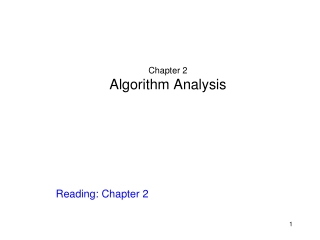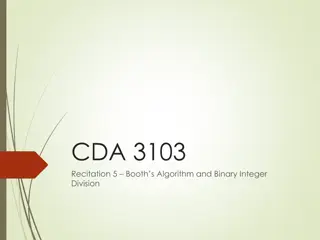
The RC4 Algorithm for Network Security
Delve into the world of network security with the RC4 algorithm. Explore its objectives, applications in SSL/TLS, WEP, and WPA protocols, and the simplicity of its encryption process. Learn how RC4 enhances data protection in communication systems.
Download Presentation

Please find below an Image/Link to download the presentation.
The content on the website is provided AS IS for your information and personal use only. It may not be sold, licensed, or shared on other websites without obtaining consent from the author. If you encounter any issues during the download, it is possible that the publisher has removed the file from their server.
You are allowed to download the files provided on this website for personal or commercial use, subject to the condition that they are used lawfully. All files are the property of their respective owners.
The content on the website is provided AS IS for your information and personal use only. It may not be sold, licensed, or shared on other websites without obtaining consent from the author.
E N D
Presentation Transcript
The RC4 Algorithm Network Security 1
The RC4 Algorithm Objectives of the Topic After completing this topic, a student will be able to explain working of RC4 algorithm. 2
The RC4 Algorithm Figures and material in this topic have been adapted from Network Security Essentials: Applications and Standards , 2014, by William Stallings. 3
The RC4 Algorithm RC4 is a stream cipher designed in 1987 by Ron Rivest for RSA Security. It is a variable key-size stream cipher with byte-oriented operations. 4
The RC4 Algorithm RC4 is used in the Secure Sockets Layer/Transport Layer Security (SSL/TLS) standards that have been defined for communication between Web browsers and servers. 5
The RC4 Algorithm Also used in the Wired Equivalent Privacy (WEP) protocol and the newer WiFi Protected Access (WPA) protocol that are part of the IEEE 802.11 wireless LAN standard. 6
The RC4 Algorithm A generic view 7
The RC4 Algorithm The RC4 algorithm is remarkably simple. A variable-length key of from 1 to 256 bytes (8 to 2048 bits) is used to initialize a 256-byte state vector S, with elements S[0], S[1], . . . , S[255]. 8
The RC4 Algorithm For encryption and decryption, a byte k is generated from S by selecting one of the 255 entries in a systematic fashion. As each value of k is generated, the entries in S are once again permuted. 9
The RC4 Algorithm Initialization of S: entries of S are set equal to the values from 0 through 255 in ascending order Where T is a temporary vector. 10
The RC4 Algorithm If the length of the key K is 256 bytes, then K is transferred to T. Otherwise, first keylen elements of T are copied from K, and then K is repeated as many times as necessary to fill out T. 11
The RC4 Algorithm Next we use T to produce the initial permutation of S. 12
The RC4 Algorithm Stream Generation: Once the S vector is initialized, the input key is no longer used. 13
The RC4 Algorithm To encrypt, XOR the value k with the next byte of plaintext. To decrypt, XOR the value k with the next byte of ciphertext. 14
The RC4 Algorithm With the current technology, a key length of at least 128 bits is desirable. End 15
The RC4 Algorithm Strength of RC4: A number of papers have been published analyzing methods of attacking RC4. None of these approaches is practical against RC4 with a reasonable key length, such as 128 bits. End 16






















